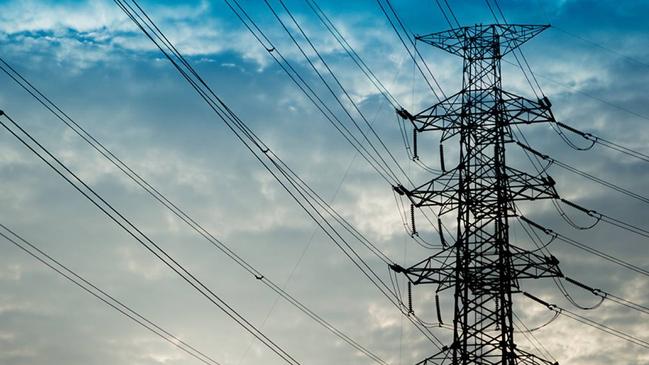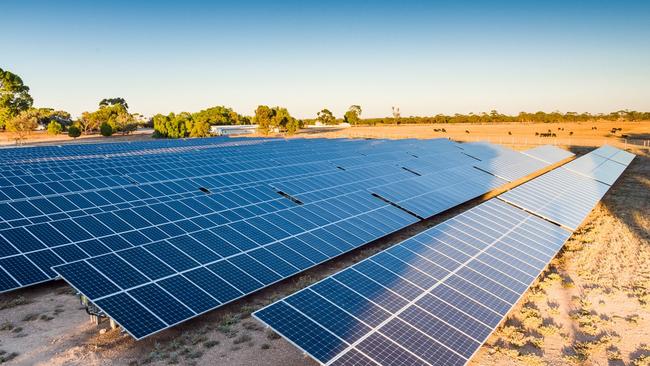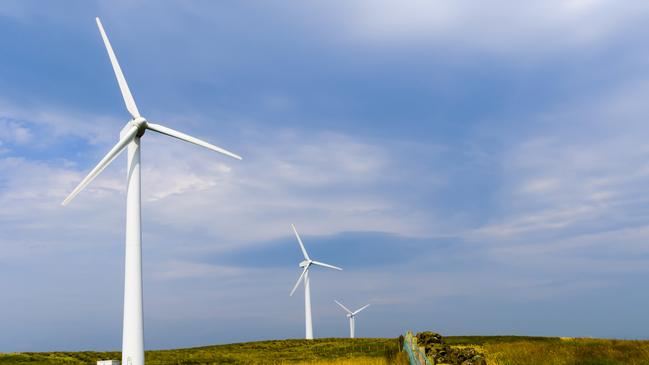Power crisis: How and why are we facing possible blackouts and huge power price surges?
The national electricity network is a complex beast, so how does it work, what is load shedding and why are we in an energy crisis now?

The electricity market has been suspended. What does this mean?
The Australian Energy Market Operator (AEMO) on Wednesday said it had suspended the spot market in electricity trading across all regions from 2.05pm eastern time.
“AEMO has taken this step because it has become impossible to continue operating the spot market while ensuring a secure and reliable supply of electricity for consumers in accordance with the National Electricity Rules,’’ the regulator said.
“The market operator will apply a predetermined suspension pricing schedule for each NEM region. A compensation regime applies for eligible generators who bid into the market during suspension price periods.’’
The price for electricity will now be determined according to the “market suspension pricing schedule” which is published each week, and for many markets appears to be $300MWh according to data sourced from AEMO.
Usually the spot price is capped at $15,000MWh, however in many jurisdictions has been capped at $300MWh this week due to it hitting the “cumulative price threshold’’.
AEMO chief executive Daniel Westerman said the market operator on Tuesday had to direct five gigawatts of generation to come into the market, and it was no longer possible to reliably operate the spot market or the power system in this way.
“In the current situation suspending the market is the best way to ensure a reliable supply of electricity for Australian homes and businesses,” he said.
“The situation in recent days has posed challenges to the entire energy industry, and suspending the market would simplify operations during the significant outages across the energy supply chain.”
The market suspension is temporary, and will be reviewed daily for each NEM region, AEMO said.
“When conditions change, and AEMO is able to resume operating the market under normal rules, it will do so as soon as practical,’’ it said.
Why are we facing an electricity crisis?
The current electricity crisis has come about from a perfect storm of problems in electricity, gas and coal markets. At the moment, there is a cold snap, combined with a large proportion of coal-fired power generators being offline, not enough capacity to move power from state to state, very high prices for gas due to the war in Ukraine, and also the intervention of energy regulators in the market to cap prices, which while designed to protect customers, disincentivises power generators from turning on. Other issues are also at play.
Dr Stephen Berry, a research fellow at the University of South Australia, says the crisis is due to:
- Ageing coal infrastructure that has not been properly maintained, with a large proportion of generators offline at the moment either for maintenance or unplanned outages
- a move to distributed generation (renewables) over the past 20 years which needs a completely different grid network including much larger interconnectors allowing power to flow between states
- a failure of the previous federal government’s policy settings which did not drive this grid investment, and
- domestic gas prices spiking because of international supply issues caused by Russia’s war with Ukraine
Griffith University senior research fellow Dr Phillip Wild says other factors include:
- the unusually high morning and evening winter peak demands associated with the recent cold snap, and
- the withdrawal of some gas generation from the network as a result of the Australian Energy Market Operator (AEMO) putting in place an administered price cap of $300 per megawatt hour (MWh), which is below the break-even price for these generators given high gas prices
“AEMO subsequently used its powers under the National Electricity Law to direct previously withdrawn gas plant to commence generating electricity to balance high morning and evening peak demands as well as covering the possibility of unexpected outage of operational generators or network infrastructure,’’ Dr Wild said.
How does the National Electricity market work?
The NEM operates across all of the eastern states and South Australia. The Northern Territory and Western Australia are not part of it due to their distance from the east coast networks. The NEM supplies electricity to about 10.7 million customers across 40,000km of transmission lines, stretching from Port Douglas in Queensland to Port Lincoln in SA. As electricity currently cannot be stored easily, the market works as a “pool” with generators offering to supply the market with specific amounts of electricity at set times for set periods. The price of electricity is determined every five minutes, and will increase when there is a shortage in the market, hopefully prompting generators to come into the market in response. From July 1, 2020, the maximum spot price for electricity was set at $15,000 per megawatt hour.
Why was the price capped at $300MWh this week?
Once the sum of the spot prices for the previous 336 trading intervals (equivalent to seven days) in a state reaches the cumulative price threshold, currently set at $1,359,100, “administered price conditions” are triggered. Once invoked the price continues until at least 4am the next day.
The Australian Energy Market Commission (AEMC) says the threshold is designed to protect customers from extended periods of high pricing.
Why would generators turn on if they can’t make money at this price?
Put simply, they won’t, but, they can be compelled to turn on, or can bid into the market and claim compensation under a process managed by the AEMC.
“These arrangements are designed to ensure generators continue to bid into the market and provide protection for generators so they will not face losses through this process,’’ the AEMC says.
“The compensation process is aimed to ensure generators continue to bid into the market and they do not face losses during this period.’’
The Australian Energy Market Operator (AEMO) can issue notices to the market for additional generation, or as a last resort can directly intervene.
Gas-fired generators need a price of more than $500MWh to turn a profit given soaring spot prices for the fuel, illustrating why some suppliers are withdrawing.

Don’t we have plenty of gas?
Yes we do, however much of it is contracted for sale to export markets, to the large energy companies, or to large industrial users. The price of gas on the spot market is the one attracting a lot of media attention, and fluctuates depending on demand.
This is generally the gas which is used by peaking power plants which switch on and off depending on whether it is commercial for them to operate.
The current spot price of gas according to the AEMO website is $34.80 per gigajoule, compared with $5.97 per gigajoule in late 2020, according to consultancy EnergyQuest.
AEMO recently invoked the national Gas Supply Guarantee to increase gas flows from Queensland LNG producers to domestic markets.
What is load shedding?
Load shedding is a process of lightening electricity demand by switching parts of the power grid off. When AEMO identifies in advance that demand is going to be greater than all of the available generation, it directs utilities - the major power distributors in each state - to turn off the power to some areas.
Rotational load shedding involves turning the power off to part of the grid for perhaps 30-40 minutes at a time, with the burden rotated between suburbs and regions.
SA’s power distributor, SA Power Networks, says lines supplying critical infrastructure and the CBD are exempt from rotational load shedding.
Automatic load shedding is triggered when equipment automatically shuts itself off to protect the network.
Load shedding can be triggered by the sudden loss of a generator, transmission line faults, or spikes in demand for power, such as during a heatwave.
Automatic load shedding was triggered following the collapse of transmission towers in SA, which led to the statewide blackout on September 28, 2016.
When will it end?
Curtin University energy economist Dr Roberto F. Aguilera says short term relief “may only arrive when the nation’s offline coal plants make a comeback, and if weather improves’’.
“Later in the year, new gas and LNG projects are expected from most of the major producing regions, such as the US and Middle East, which should put downward price pressure on gas and consequently electricity.”
The longer-term solution involves projects such as the Snowy 2.0 hydropower scheme and the new interconnector which is being built between SA and NSW, as well as the Integrated Systems Plan designed to chart a path to Net Zero for the network.
A capacity mechanism to ensure there is enough capacity in the network is also being fast-tracked.

What will the effect on consumers be?
Smaller energy retailers risk going out of business during the current crisis, as they may not be able to source electricity at competitive rates which they can then pass on to their customers.
This means that there will be less competition in the market, with the “gentailers” - companies which both generate electricity and sell it - benefiting from having less competitors.
Higher prices generally for coal and gas will filter down into the prices all retailers charge their customers, as will the cost of the investment which need to be made in new generation, storage and the electricity grid.
Dr Liam Wagner, associate professor of energy economics at the University of Adelaide says, “In the coming months we are likely to see increasing electricity costs which will compound the issues we currently face from petrol and diesel prices.
“Supply chain risks, food prices and more generally costs of living will be further exacerbated in the coming weeks/months due to poorly executed and incoherent energy policies.”
What are energy ministers doing about it?
The state and federal governments last week agreed to work on a “capacity mechanism”, which will be developed by AEMO and the Energy Security Board.
A capacity mechanism rewards power producers for having the capacity available to produce power even if they are not producing, meaning they are not just remunerated based on the power they sell.
A capacity mechanism was scheduled to be developed by 2025 however that time frame has been accelerated.
The design of the mechanism is expected to go back to ministers next month, and is aimed at bringing more renewables and storage into the system to support stability, however coal fired power has not been ruled out of the mechanism at this stage.
Energy ministers also:
- agreed to continue working with industry to ensure sufficient gas and black coal is provided in the near term to the domestic market, including working with relevant state rail authorities to secure access for domestic black coal supply, and with power station operators to get generation back online as quickly as possible.
- collaborate and report back to Energy Ministers on the potential for the aggregation of renewable energy and storage projects across the nation.
AEMO has also been granted the power to buy and store gas for situations such as these, and has been asked to provide an urgent update on the east coast gas supply and demand situation.



To join the conversation, please log in. Don't have an account? Register
Join the conversation, you are commenting as Logout